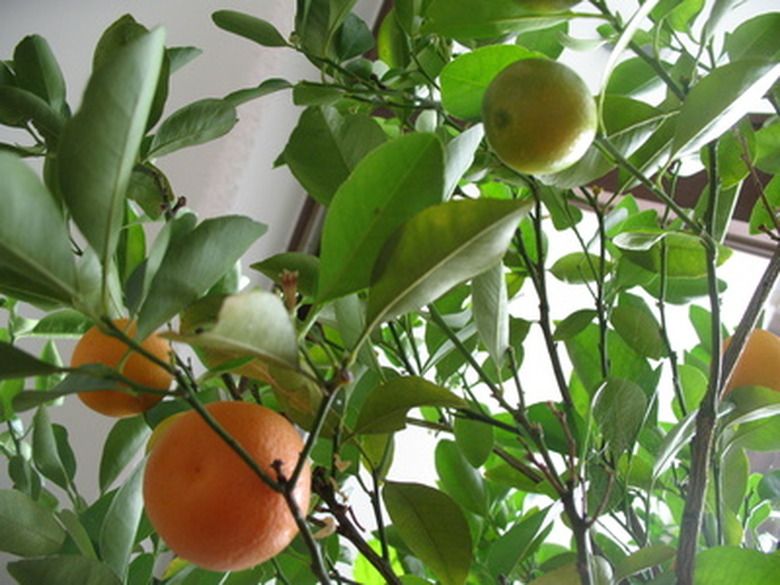Florida Fruit Leaf Identification
Florida is well known for producing tropical and subtropical fruits that are shipped across the United States and exported around the world. Many home gardeners in Florida grow fruit trees in their gardens. Identifying fruit tree leaves requires knowing a few basic plant leaf characteristic terms and careful observation of leaf features that are unique to particular fruits.
Basic Identification
There are several basic plant leaf identification terms that the average home gardener ought to know. Leaves, for example, are either classified as simple or compound leaves. Simple leaves grow singularly from a leafstem. Leafstems with multiple leaves are called compound. Both simple and compound leaves can grow in an opposite or alternating patterns on stems. Edges of leaves are called margins. Leaf margins can be smooth, also called entire margins. They can also be fine toothed and double toothed, giving them a serrated edge. The unique leaf margin of your tree will aid you in identifying your fruit tree.
- Florida is well known for producing tropical and subtropical fruits that are shipped across the United States and exported around the world.
- Identifying fruit tree leaves requires knowing a few basic plant leaf characteristic terms and careful observation of leaf features that are unique to particular fruits.
Orange
Oranges are perhaps the best-known fruit produced in Florida. According to Purdue University, Florida produces more than 200 million boxes of oranges annually. Two important distinguishing features of the leaves of an orange tree are they are aromatic and evergreen. Orange tree leaves are elliptical or slightly ovate in shape and grow between 2 and 6 inches in length. Leaves are also shiny and leathery.
Avocado
Avocados have large, dark-green leaves. The tree is evergreen, though during dry periods the tree may shed its leaves briefly. Avocado leaves are also whitish on their underside, which may help you with identification. They vary in shape. Leaves are arranged alternately on a leafstem and average 4 to 6 inches in length. Their margins are smooth.
- Oranges are perhaps the best-known fruit produced in Florida.
- Avocado leaves are also whitish on their underside, which may help you with identification.
Lemon
True lemon trees are perhaps best identified by the sharp thorns on their twigs. Their leaves are reddish when immature, turning dark green as they mature. They grow in an alternate pattern on the leaf stem. Lemon leaves also have a second leaf, sometimes called a wing, on the petiole. The petiole is the where the leaf attaches to the stem.
Mango
When mango trees are young, leaves are amber, pink or light green. Like the lemon tree, the leaves of the mango darken as the tree matures. Mango leaves are long and narrow, which is also called lanceolate. They can grow to be quite long, up to 16 inches. They grow in an alternate pattern on the leaftstem and are leathery.
- True lemon trees are perhaps best identified by the sharp thorns on their twigs.
- Their leaves are reddish when immature, turning dark green as they mature.
